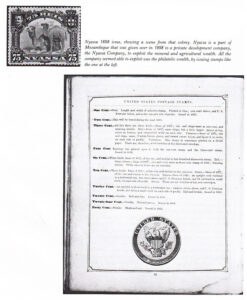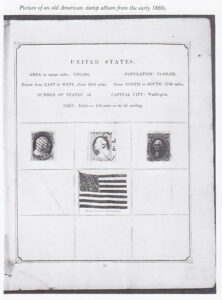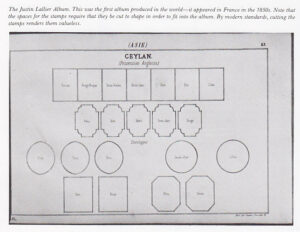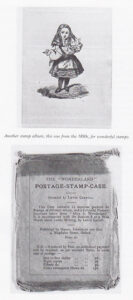Believe it or not, no one turns to stamps knowing nothing about them. Nearly everyone who considers forming a collection has had, at one time, a box of stamps that were saved because he or she felt they were interesting. At a certain point, though, the budding collector takes the stamps out of the drawers or boxes they have been kept in and decides that some form of orderly collecting is necessary. When the decision is made to pursue the path of becoming a serious stamp collector or philatelist, the route is well marked. The first step that collectors must take is to become known to the stamp dealers in their area. A long time should be spent window-shopping and talking to the people in the stamp shop. Stamp dealers are afflicted with the same bug as most collectors: they love to talk about what they do. Ask about what to collect, and get a feel for the various dealers’ abilities.


The next step is to purchase the basic supplies. You will need a stamp album. Prices for albums range from under $10 to a level that will make you think you are buying the shop, not the album. For a novice collector (though novice is a dangerous word to use as no one likes to think of himself as a novice anything), an inexpensive worldwide album would be the best to start with. Ultimately, most collectors choose not to collect worldwide stamps, as the hundreds of thousands that have been issued form a canvas that is too broad to have much of a sense of accomplishment. But how will you know what to specialize in if you have never been exposed to the broad scope of worldwide collecting? An inexpensive worldwide album will give you such exposure, and even if you eventually decide to collect only your country of origin, as do so many collectors, the experience will not be a total loss. After all, you will be probably the only one among your friends who knows where Bosnia and Herzegovina is and where Poonch can be found on a map.
Next, buy a packet of stamps. In these days of the newspapers telling us that one stamp sold for $935,000 a public auction, and rumored private sales of individual items for even more, people should realize that most stamps are inexpensive. A packet of several thousand different stamps will cost but a few dollars. They will have no investment potential whatsoever, but that should not concern you. Stamps can be a wonderful investment medium, about which we will talk more later, but the most successful investors learned the hobby from square one. They handled stamps, learned to look at them, measured the perforations, and found the watermarks on them. They even have damaged a few. Veteran philatelists, many of whom have made considerable money as their stamp assets have increased in value, are very concerned over the lack of basic philatelic understanding that is characteristic of some new stamp investors who are entering the stamp world for profit alone. You cannot gain a true feeling and respect for stamps until you have handled and studied thousands of them. Otherwise, you will simply be buying the stamps that other people have told you to and selling those stamps when you are told to. Then, you won’t be a collector or investor at all, but merely a follower.

Your packet of stamps will contain several thousand stamps, so you had better buy a stamp identifier. It is hard for Americans to realize that people in the rest of the world do not always write their country names on their stamps the way we would expect. For example, Hungary writes Magyar, which, not oddly, is what the Hungarians call themselves. Switzerland uses its Latin name, Helvetia, to avoid language conflicts among French, German, and Italian, its three national languages, each of which gives Switzerland a different designation. And Great Britain does not put its name on its stamps at all. Stamp identifiers are available for a few dollars; they contain a list of what the name of a country is on a stamp, with the corresponding English name.
In examining this wide variety of stamps, you will learn to distinguish various printing methods at a glance, and develop a keen eye for color. The human eye can distinguish several hundred thousand shades, though most of us say red when we mean something that is anywhere between purple and brown. Perceiving shades and learning to name them is an exciting experience.
Stamp collectors pick up their stamps with their fingers if they are extremely novice or extremely expert. For nearly all of us in between, stamps are handled with stamp tongs, which are blunt-end tweezers especially designed for stamp collectors. There are two reasons why tongs are used. First, your fingers would tend to bend the corners or blunt the perforations on stamps. It is hard to get under a stamp lying flat on a desk to pick it up, and the slightest damage to a stamp can greatly affect its value. Second, even the cleanest hands have natural oil on them. When such oil gets onto the face of the stamp, it affects its appearance, and fingers can leave fingerprints on the gum— a philatelic sin for which there is no redemption. Tongs should be held in the hand like a pencil, pressure being applied with the thumb to the index finger to squeeze them closed. With experience, once the stamp is held by the tongs, you will learn how to turn the tongs gently between your thumb and forefinger to examine the back of the stamp. Many collectors turn the tongs by turning the wrist, which is neither as efficient nor as effective. Some collectors believe it is necessary to squeeze the tongs as hard as they can so that the stamp does not get away. In fact, only a small amount of pressure is required; it is safer for the stamp and will prevent hand cramps. But you will be practicing on cheap stamps until you learn the skill, so don’t worry about not doing it perfectly in the beginning.

Stamps are made of paper, and they are subject to all of the advantages and disadvantages of that product. You can drop them. You can bend them, but just so far, and the paper springs back. Most stamps tend to be a little more brittle unused than used because the gum restricts the elasticity of the paper. However, once you have bent a stamp too far, it is creased— forever. As a general rule of thumb, figure that once a stamp has been creased, it is worth only half of what it would be if it were perfect.
